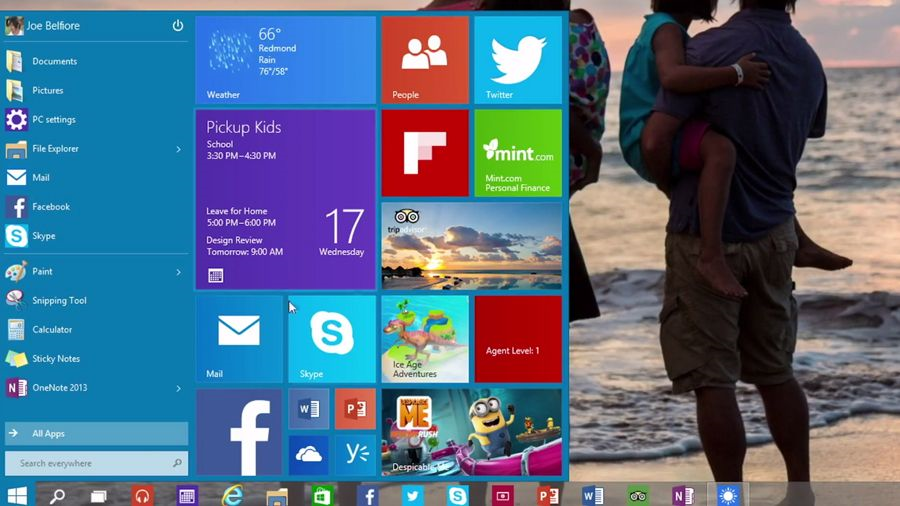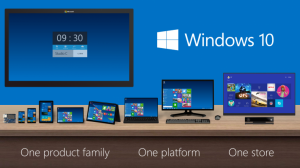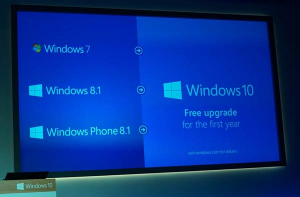
The unveiling of Windows 10 by Microsoft in September 2014 was quite phenomenal where the company unleashed the new window version’s next-generation features that are designed to go hand-in-hand with today’s latest technologies, be it cloud computing or the ever-increasing mobile hybrid devices. During the second event held on 21st January this year which was meant to give further insight of Windows 10 capabilities, the company’s executive vice president Terry Myerson was quoted as saying that ‘Windows 10 will be the best enterprise platform ever’. His point to withstand this statement was that unlike previous Window versions, the new one will make the computing experience more personal for every type of user ranging from IT professionals and business users to layman consumers. Moreover, it will broaden the range of devices it can be used on, so that users are not limited to PC use only but can also relish to work with Windows while using their mobile devices like tablets and smart phones.
This version can be considered as a whole new chapter in the life of Windows operating system as it is going to offer new features like never seen before. Some of the features that the tech giant announced with great pride in the event(s) are Continuum (switch and use Windows 10 on different platforms), Cortana (voice controlled digital assistant), Spartan (new browser), Xbox live and new Xbox App, modernized Start menu, and many more.
Apart from introducing these features, Myerson made another announcement which left the audience in awe as well as lead to lot of speculations; and the news which made that happen was – Windows as a Service. In this era of cloud computing, mobile devices, and a market thriving with Software-as-a-Service or Platform-as-a-Service products, the OS making giant reckoned that this is the right time to make this move and turn the product into a service.
As mentioned by Myerson, customers running Windows 7, Windows 8.1 or Windows Phone 8.1 will be able to do a free-of-cost upgrade to Windows 10 in the first year after its release. Moreover, this is not going to be just a one-time upgrade but the company will keep updating the Windows for the supported lifetime of the device while maintaining its security and introducing new features and functionalities over time, all this at no additional cost. In other words, it could be said that Windows will become more like an Internet service where the version numbers of the operating system will cease to exist, so operating systems will not be differentiated by version numbers (Vista, 7, 8, or 8.1), and all will be at the same level (in terms of features, enhancements, and updations).
As far as the enterprise customers are concerned, things will continue to work in the same way as they are currently working but long-term service for mission critical environments will be provided to them. Microsoft also recommended that the enterprise devices should be kept up-to-date with latest security and productivity improvements as soon as they are available.
Is it really going to be a free service?
Microsoft’s announcement about charging no additional cost for upgrading systems running on Windows 10 has left many people skeptical that how is it possible for the company to make their own profit if they are going to take this step.
Moreover, how exactly Microsoft is going to plan the revenue model for Windows 10 and what happens when the first year’s free upgrade has expired? Whether the consumers will then have to buy the Windows for an annual subscription wherein the operating system will be upgraded automatically or whether they have to purchase it for a lifetime support? Also, will it be possible to use the service on multiple devices? These are some unanswered questions on which the tech giant has chosen to maintain silence as of now.
In retrospect, the trends that the company has followed till date with some of its other products, can lead to some guess-work to figure out the possibilities of how it can be provided as a service.
The company might be inspired by the positive response it received for Office 365 which is a subscription service wherein the users have to pay annually (different rates for different plans) for continuous auto-updates to the newest version of Microsoft Office suite, somewhat like a Dropbox subscription in which the more money you pay, the more benefits you get. Nevertheless, users also have the option to buy it as a product if they are not interested to get its subscription.Similarly, the company might be planning to follow the same policy for Windows 10 as it did with Office 365, after the first year is over.
In a crux, it could be said that this is the company’s strategy to gain attention of as many users as possible and to make as many devices (mobile phones, tablets, hybrids, and laptops) as possible to run on Windows 10, and when the free updation period has expired then switch over to the Windows subscription policy.
WaaS across different platforms
The concept of Windows-as-as-Service may help Microsoft boost up its mobile industry which has not really tasted success till now as compared to other members of its family like PCs and Laptops.
With this move, the company is basically enabling the developers to target all types of Windows devices including PCs, smart phones, tablets, and Xbox on a common platform and in one store. Like mentioned earlier, the number of Microsoft’s mobile phone users is quite less in the market probably because the developers do not want to take the pain of making apps for the less-in-demand device. But now with Windows working as a service, whenever the developer will make apps for PCs, they could be used directly on mobile phones as well due to its cross-platform nature. Additionally, users will be able to access and sync their data on multiple devices, for instance, if you started creating a file on your PC, then you will be able to pick up from where you left to edit the file on your tablet and finally finish it up in your smart phone.

The Windows 10 will bring the age of versionless windows which as it seems right now will end the dilemma of the users about which Windows version to go for and will also benefit the company as instead of supporting all the versions, it will have to concentrate on one single version, rather “service”.
If you have a PC running on Windows 7 or 8.1, then you have every reason to be excited about this “big-bang” change in the operating system, as you will be able to enjoy and fully utilize Windows 10 for one complete year. Even after that, if the company finally decides to apply a subscription fee on annual or monthly basis (or maybe, provides the option to purchase subscription for entire lifetime of the device), then you shouldn’t give it a second thought since you will have a system that will automatically update itself with the latest windows features.

Plz fast send link windows 10 download me link ka wait kar rha hu plz fast